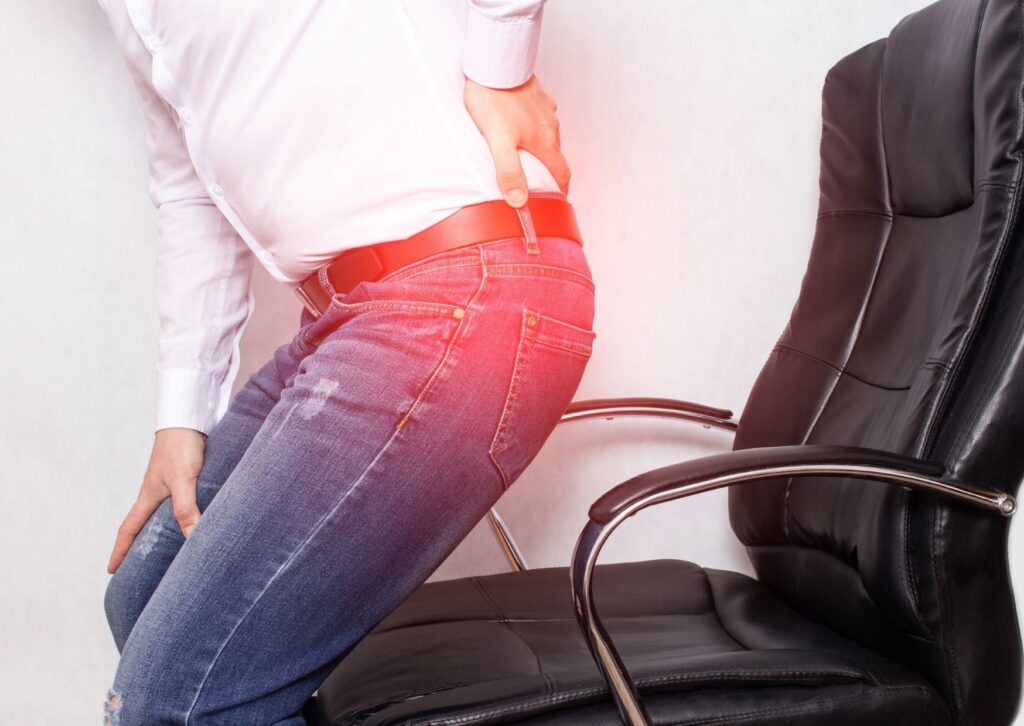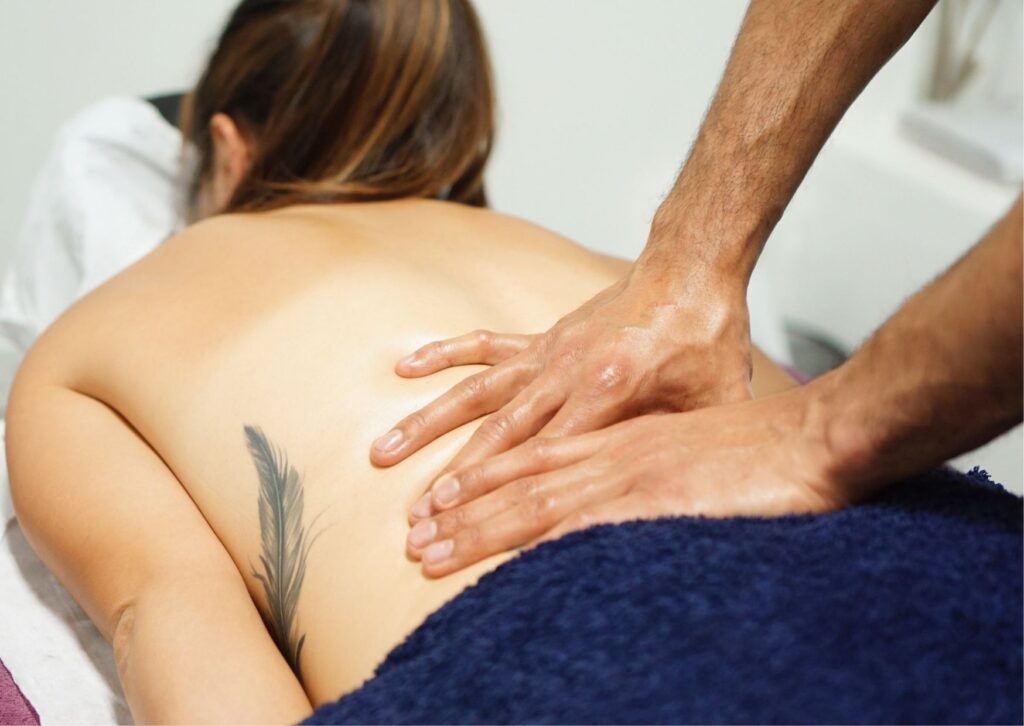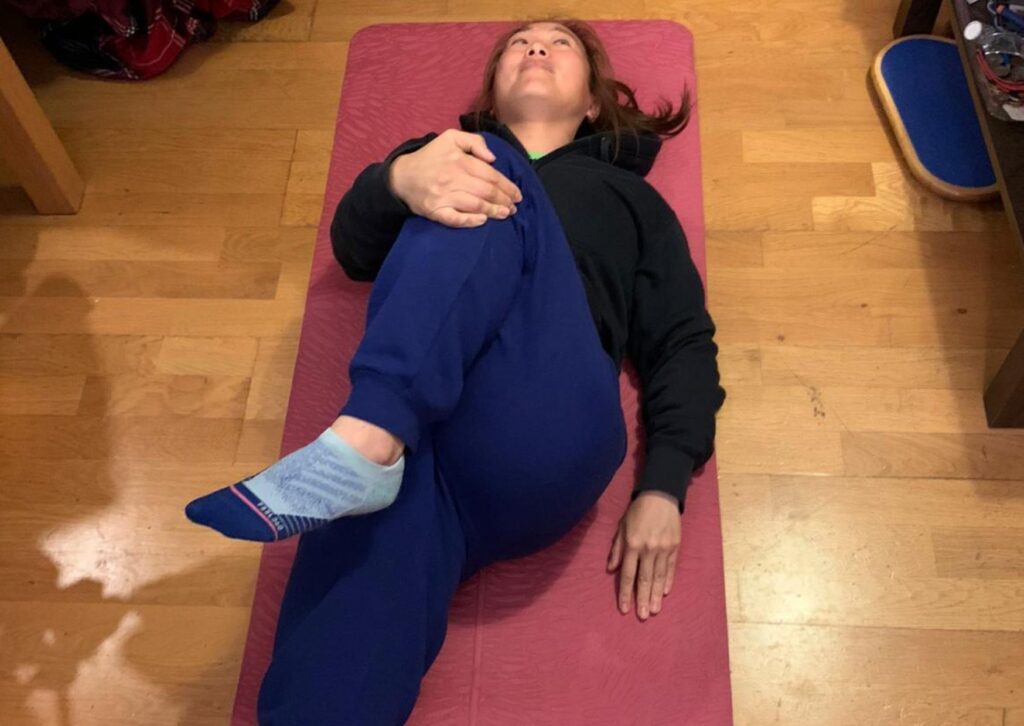5 Methods to Relieve Sciatica Pain
What is Sciatica?
Sciatica is discomfort that extends down one leg due to the irritation or compression of the sciatic nerve. The sciatic nerve runs from your lower back to your hips, buttocks, and down each leg.
Sciatica is usually on one side but in some cases, it can affect both sides. This is known as bilateral sciatica.

Symptoms of Sciatica
Inflammation, discomfort, and numbness are common symptoms in the affected leg.
Other symptoms include:
- Intense lower back pain
- Buttocks and lower leg pain
- Weakness or numbness down one leg
- Pins and needle sensation in one leg
- Stiff and restricted lower back/buttocks
How Painful is Sciatica?
Pain levels of sciatica depend on how much the sciatic nerve is being compressed, as well as an individual’s tolerance to pain.
Everyone’s tolerance to pain is different and therefore it’s hard to specify how painful sciatica is.
However, sciatica can be extremely painful and, in some cases, can cause individuals to feel weak or faint.
If someone is complaining about their sciatic pain, don’t take it for granted, sciatica can be debilitating and this is to be taken seriously.

Can Stretching Help to Relieve Sciatica Pain?
In many cases, stretching has been shown to relieve sciatica pain.
If the sciatica is being caused by muscular tension and tightness, then adopting a consistent stretching routine can help to relieve the pain and discomfort caused.
Check out our article on “Two Key Stretches To Help Ease Your Sciatica Pain”
Can I Exercise with Sciatica Pain?
If you’re suffering from sciatica, exercise may be the last thing on your mind.
However, for some of us, missing a day in the gym would set us back with our goals, prevent us from getting our gains, and slow down our momentum. So, it’s important to know if exercise is beneficial or not while suffering from sciatica.
The short answer is, that it depends on what type of exercise you’re doing.
As always, it’s important to remember, that it’s always best to seek the advice of a professional before partaking in exercise, especially if you’re suffering from sciatica. Having said that, here are some dos and don’ts when it comes to exercising with sciatica.
Do encourage yourself to get moving, allowing light movements, getting your blood flowing, and stretching your muscles can benefit your sciatica pain. Dynamic movements, light exercise, and walking are generally okay.
On the other hand, don’t do any strenuous exercise. Strenuous exercise, such as heavy weight lifting, intense boot camps, or long-distance running can have a negative impact.
Doing exercise that is too intense can increase muscular restriction, tightness, and tension which could ultimately aggravate your sciatica pain.

5 Methods to Relieve Sciatica Pain
Before attempting anything seen online or in this article, it’s always best to seek the advice of a professional to ensure the advice is relevant to you.
However, here are a few methods that can help to relieve your sciatic pain.
1. Sports Massage
Hiring a Sports massage therapist is a fantastic method to reduce muscular tension, tightness and relieve sciatica pain.
You can benefit from sports massage by reducing muscular stress, improving movement, reducing muscular tightness, and more.
The techniques used in a sports massage, such as trigger point therapy, effleurage, and kneading are all methods that prove to be effective in decreasing muscular tightness.
If muscular restriction and tension are the cause of your sciatica then a sports massage can prove to be a great method of reducing your pain.
A skilled therapist will be able to assess you and see if they’re able to help you or not.

2. Foam rolling
Using a foam roller can be fantastic in relieving sciatica pain. Individuals and athletes all around the world utilise foam rolling to relieve muscle tension, tightness, and limitation.
Some see foam rolling like giving yourself a self-massage although not as enjoyable.
Although not as effective as hiring a massage therapist, foam rolling still has many benefits and can aid in reducing some of the muscular tension that may be contributing to your sciatica.
It’s also a cost-efficient way of reducing muscular tension as all you need is the foam roller. Massage comes at a financial cost and once you have the foam roller, it doesn’t cost you any more money to use it.
3. Stretching
There are countless benefits to stretching and one of those benefits is relieving sciatica pain.
If stretching the right muscle groups, stretching can help to relieve sciatic pain by targeting the muscles that may be compressing the sciatic nerve.
If you haven’t seen it already, we’ve got an article with two specific stretches that can ease your sciatic pain.
The reason stretching can help with sciatic pain is because it helps to relieve tension in the muscles. As we’ve already established, one of the biggest causes of sciatic pain is muscular tension and tightness.

4. Movement
Sitting still all day can exaggerate your sciatic pain. Staying in one position for long periods can cause our muscles and joints to stiffen up.
When we sit for long periods, our blood flow slows down and our muscles and joints gradually begin to stiffen. This means when we eventually start to move, the initial movement can be extremely painful.
Avoiding sitting all day and getting up regularly can help to keep your muscles loose, relaxed, and less restricted. This will only aid in easing your pain.
If you’re sat at a desk all day, you should be aiming to get up every 45 minutes at the very least.
5. Ice and Heat Therapy
For centuries, ice and heat have been used to relieve pain and discomfort while also promoting recovery.
Heat therapy has been used since 460-377 BC as a way of resolving spasms.
When it comes to sciatica, hot and cold therapy can be equally beneficial in reducing the pain.
Heat can be another way of reducing the muscular restriction that may be causing your sciatic pain. Therefore, things like hot baths, hot showers, hot water bottles, and other safe heat-generating methods can be beneficial in easing the pain.
Ice on the other hand can help to numb the pain. It’s is a great way to reduce inflammation and if there is any internal inflammation then ice can help to reduce it.
Applying Ice, also helps to numb the pain receptors which can give you a period of relaxed pain.
Individuals tend to ice or heat in approximately 10/15-minute intervals. It’s critical that you do this at a safe temperature to avoid burning yourself or damaging your skin.
If none of these methods help to relieve your sciatic pain, then it’s even more important that you seek advice from a professional.


